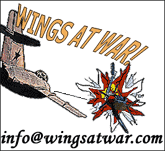BONUS GAME - Desert Spitfires
THE WAR OF INDEPENDENCE AND
THE PARTITION OF PALESTINE
In 1947 the UN instituted Resolution 181 declaring the end of the British mandate in Palestine and the creation of two independent states, one Arab and one Jewish.
In reality it was an impossible task to reconcile the two parties, but if anything the solution reached by the UN made the situation worse. Palestine was divided into a patchwork of Arab areas virtually intermingled with Israeli areas, leading to immediate conflict. Both sides began low level attacks against the other, with the British stuck in the middle.
Israel built up a large force of pre-war civil aircraft, trainers and surplus military observation planes to form an 'underground' air force. Hand grenades and then, slightly more effectively, light bombs thrown out of the door were the main weapon. On May 15th 1948 the state of Israel was declared and the Arab states surrounding Israel - Egypt, Syria, Jordan, Lebanon and Iraq - attacked.
Israel quickly cast around for more modern aircraft and their main supplier was Czechoslovakia. The Czechs sold Israel twenty-five Avia S-199 (Me 109Gs assembled from parts left over after the war but with Jumo bomber engines) called 'Mezek' or Mule by the Czechs but more often known as 'Messer' (knife in Yiddish) by their pilots, and also received an order for fifty ex-Czech Air Force Spitfires. In addition they converted back to bombers three civilianised B-17s that the Israelis had bought in America. In all more than thirty different types of aircraft were added to the Israeli inventory, though not all arrived in time to see action.
The Czechs also helped train Israeli pilots, though many were non-Jewish volunteers looking for excitement after having flown in World War Two.
Opposing them were the Royal Egyptian Air Force and the much smaller Syrian and Iraqi air arms. The latter two consisted mainly of a few T-6 Texan (or British built Harvard) trainer/light bombers and Avro Anson reconnaissance/bombers, but the Egyptians were equipped with Spitfires and C-47 Dakota transports adapted as bombers.
In addition to attacks on Israel the Egyptians also launched several raids on British forces garrisoned in Israel. The first raid surprised the RAF and two Spitfires were destroyed on the ground. However, subsequent attacks were intercepted by the RAF and two Egyptian Spitfires fell to RAF Spitfires. The RAF clashed with Israeli planes too. An RAF Spitfire, part of a reconnaissance flight, was brought down by Israeli AA fire and the rest of the unit was then bounced by a pair of Israeli Spitfires. All three RAF planes were shot down. Nineteen Spitfires and Tempests were sent to look for their downed comrades, these were attacked in turn by four Israeli Spitfires who managed to knock down a Tempest with no loss to themselves.
Egypt sustained the arms race by purchasing fighter reinforcements in the shape of Fiat G.55 Centauros and Macchi MC.205V Veltros. They were the last fighter types produced by Italy at the end of the Second World War and were considered as good as any of their contemporaries. The Egyptians also got their hands on a few four-engine Stirling transports which they quickly converted back to bombers.
Most of the fighting revolved around attacking enemy ground troops but longer ranged bombing raids on cities and other strategic targets were also carried out. Israeli successes both in the air and on the ground forced the Syrian and Iraqi governments to halt their offensives. The Israelis concentrated their efforts on Egypt and they soon began to decimate the Egyptian Air Force and make huge inroads into Arab controlled territory. In January 1949 a ceasefire was agreed and the Israeli Independence War was over, though its struggle for independence was not.
A recommended read is the book Spitfires Over Israel by Brian Cull, Shlomo Aloni and David Nicolle
click above to download Desert Spitfires
The rules come as a PDF file suitable for printing on both sides of
two A4 sheets. Print odd pages first and then even pages on the back
of the sheets. Fold in half to make a four page booklet.
